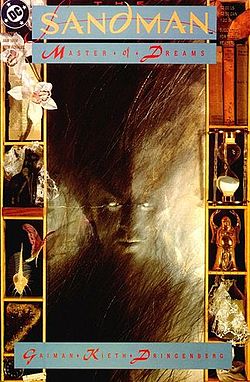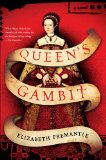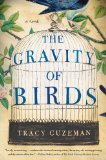July 25, 2013
Hello
This issue of BookBrowse Highlights includes a review of The Spy Who Loved, the true story of WWII spy Christine Granville (and the opportunity to enter to win a copy for yourself). You can also read the backstory to Children of The Jacaranda Tree, a stunning debut novel set in post-Revolutionary Iran; and find out five things you probably didn't know about Neil Gaiman. All this and much more in this issue!
Best regards,
Davina,
BookBrowse Editor
Having trouble viewing this email?
|
You are receiving this email because you're subscribed to BookBrowse's free twice monthly newsletter.
BookBrowse recommends books that do more than just entertain - books that leave you mentally richer than when you started them, such as novels that whisk you to unfamiliar times and places, thrillers that are more than just 'page-turners', and thought-provoking non-fiction. If you'd like to know more about BookBrowse, and how we got started, please click here. One Month Free TrialFor a one-month free membership trial, giving you access to all our content - click here Davina & Paul Witts - Founders
|
Featured Review
Below is part of BookBrowse's review of The Spy Who Loved. Read the review in full here  The Spy Who Loved: The Secrets and Lives of Christine Granville by Clare Mulley
Hardcover (Jun 2013), 448 pages
Publisher: St. Martin's Press ISBN 9781250030320 BookBrowse Rating:  Critics' Consensus:  Review: Review: Polish native Christine Granville, born Krystyna Skarbeck, was, purportedly, Winston Churchill's favorite spy. A contestant for Poland's national beauty contest in 1930, she married twice and had a number of lovers. She was Britain's first female secret service agent. To say that her life is the stuff of legend is to put it mildly. Clare Mulley's newest biography The Spy Who Loved: The Secrets and Lives of Christine Granville sifts through the stories, fabrications, and tall tales surrounding this World War II secret agent to discover who Granville really was. The resulting biography brims with details and vignettes about her colorful life. The daughter of a Polish aristocrat, Count Jerzy Skarbek, Granville enjoyed an indulgent childhood on a lush plantation in Poland where she ran with the horses and stayed indoors as little as possible. She craved freedom, was independent, charming, beautiful, fearless - and stubborn. When Germany invaded Poland in the fall of 1939, Granville was married to a Polish diplomat stationed in South Africa. She arrived in London, and aided by her friend and respected journalist Frederick Voight, convinced the British Secret Service that her assistance would be vital to defeat Britain and Poland's common foe, Germany. Her first mission, probably designed to prove her courage and commitment to Britain, found her skiing into Poland in the winter of 1939 through the dangerous Tatra Mountains to distribute leaflets to the Polish people encouraging them to stand strong against Germany. Her professionalism, tenacity, and level-headedness continued to prove to the British that her involvement was essential. She eventually provided evidence of Germany's plans to invade Russia weeks before British command believed the German forces to be ready. Later, she supported the preparations for the Allied invasion of France. Perhaps the most important aspects of Granville's personality were her abilities to remain calm despite any provocation and to find creative solutions for tough problems. Arguably, most spies would have these strengths, but Granville's many contemporaries believed that she particularly excelled here. Stories highlighting her skills abound. Granville routinely relied on her beauty and men's assumptions about women to get herself out of stressful situations. During one episode when she and her companion were being interrogated and searched, she blithely straightened her skirts and took a seat on her luggage to wait. The German officer never asked to search her luggage, and she never let on that she was nervous or had anything to hide. They were dismissed without the officer having any idea that all incriminating evidence was in fact safely stowed in Granville's luggage. Another episode involves her quick-witted decision during an interrogation in a Budapest prison to bite her lips until they bled. She then began to cough up the blood in a dramatic manner, affecting a severe case of tuberculosis. The interrogating officer, growing nervous that he would contract the disease, had her medically examined for the deadly airborne illness, which at the time had no vaccine. The doctor, clearly on Granville's side, agreed that she had tuberculosis - she was released. As these and similar stories quickly circulated, Granville became popular among the service agents for her intelligence and courage. After the war, she won multiple medals for her efforts. The post-war years however, were tough, since Granville found the predictable days of peace, dull and unanimated after the wartime excitement. Unwilling to work as a civil servant in an office, she finally found work as a maid on cruise ships, a job that, though below her skill level, allowed her to travel. Since the British passengers often discriminated against foreigners, Granville's first voyage was very challenging. She started a relationship with Dennis Muldowney, a porter (and former merchant marine) aboard the cruise ship, who fell hard for the former spy. Once the frustrations of the sea passage were over and Granville was once against amongst friends in London, her interest in Muldowney waned. He, however, grew increasingly obsessed with her and stabbed her to death when, months later, she told him that he was to leave her alone. It was a harsh ending for the brave woman who had evaded Nazi capture dozens of time during WWII. After her death, Granville's life immediately became the stuff of legend, as the British press speculated about the "Beautiful Polish Countess Turned British Agent" who died at the hands of a jilted lover. Some thought her death was motivated by the NKVD (the secret service organization that was the predecessor of Russia's KGB). These stories were soon squashed when it was determined that Muldowney acted independently and for his own cruel reasons. Later, it was suggested that Granville inspired Ian Fleming's female spy character Vesper Lynd, in the first James Bond novel, Casino Royale. Many of the people who knew her best rallied to protect Granville's story from being sullied by the press. This fierce protection snuffed out a few early biographies and ultimately worked to keep her story from being as popularly known as it probably should be - especially considering Granville's status and successes (continued) Reviewed by Sarah Sacha Dollacker Above is part of BookBrowse's review of The Spy Who Loved. Read the complete review and backstory & browse an excerptRead-Alikes: 22 Britannia Road by Amanda Hodgkinson Agent Zigzag by Ben Macintyre At Risk by Stella Rimington Sweet Tooth by Ian McEwan Unbroken by Laura Hillenbrand
|
|
Beyond the Book

At BookBrowse, we don't just review books, we go 'beyond the book' to explore interesting aspects relating to the story.
Evin Prison
Children of the Jacaranda Tree plants its story firmly in the tumultuous landscape of Iran in the 1970s and '80s. The Shah was overthrown in the late 1970s, and political activists were full of hope for a new kind of Iran. But it was to be a fleeting hope. The new Islamic Republic of Iran threw dissenters in prison, charging them with anti-government activities. Then, in 1988, they executed many of them.
Sahar Delijani, author of
Children of the Jacaranda Tree, was born in Evin prison in Tehran, Iran's capital city, in 1983. Her parents had been among the many working to overthrow the monarchy. They were secularists who wanted, and hoped, for a secular republic, but instead the Islamic fundamentalists grabbed complete power and Iran became a theocracy. Many of the secular activists renewed their efforts for a democratic government and many of them ended in prison - including Delijani's parents and some of her aunts and uncles. Both Delijani's mother and aunt were pregnant at the time. Both gave birth in the prison.
Says Delijani:
"The book's first chapter is inspired by what my mom went through giving birth to me behind bars. A few years later my parents were released, which was fortunate for them because in 1988 - the last year of the Iran/Iraq war - the regime carried out mass executions of political prisoners. It has been estimated that the purge killed between three and twelve thousand people. We'll never know the exact number because their bodies weren't turned over to their families and funerals were not allowed. Instead many of the victims were buried in mass graves. My dad's brother was among those executed that summer."
 Evin prison (nicknamed Evin University because it has held so many intellectuals) is located in Evin, in the north-west of Tehran, at the foot of the Alborz Mountains. Constructed in 1972, it has an execution yard, a courtroom, and cell blocks. It was originally run by the Shah's security and intelligence unit and was designed to hold 320 prisoners (20 in solitary and 300 in general); but was later expanded to house over 1500, including over 100 solitary cells for political prisoners. Evin prison (nicknamed Evin University because it has held so many intellectuals) is located in Evin, in the north-west of Tehran, at the foot of the Alborz Mountains. Constructed in 1972, it has an execution yard, a courtroom, and cell blocks. It was originally run by the Shah's security and intelligence unit and was designed to hold 320 prisoners (20 in solitary and 300 in general); but was later expanded to house over 1500, including over 100 solitary cells for political prisoners.
After the Islamic Republic was established, Evin prison was expanded enormously - to house over 15,000 prisoners. While its stated purpose is as a detention center prior to trial, many prisoners have lived out their sentences in Evin, and many others have been executed there.
Internationally, Evin prison is synonymous with political prisoner and revolution. Many famous political activists and accused activists have been imprisoned - and worse - there. Here is a very small sampling of their stories: ....Continued
Above is part of BookBrowse's backstory to
|
Blog: Five Things You Might Not Know About Neil Gaiman Before he began to write novels that would earn him public recognition, Gaiman wrote comic books and graphic novels. The Sandman graphic novels (1989-1996), initially published by D C Comics and later by Vertigo, were particularly popular with a total of 75 issues. The Sandman is about an all-powerful being called Dream, also named Morpheus. He is one of seven god-like siblings who have always existed, and who exert their influence on our world. The series follows Morpheus, who has been the prisoner of a group of wizards for 70 years. Once he escapes, he must find several powerful objects that will allow him to exact revenge upon his enemies. Along the way he must also face up to his mistakes, and find a way to reclaim his kingdom of dreams. Norman Mailer once described The Sandman as "a comic strip for intellectuals." Among its many awards it was included in Entertainment Weekly's list of 100 best reads from 1983 to 2008, and issue 19 won a World Fantasy Award for Best Short Fiction in 1999 (the only graphic novel to have ever won the award). It is also one of a very few graphic novels to have been on The New York Times bestseller list. Before he began to write novels that would earn him public recognition, Gaiman wrote comic books and graphic novels. The Sandman graphic novels (1989-1996), initially published by D C Comics and later by Vertigo, were particularly popular with a total of 75 issues. The Sandman is about an all-powerful being called Dream, also named Morpheus. He is one of seven god-like siblings who have always existed, and who exert their influence on our world. The series follows Morpheus, who has been the prisoner of a group of wizards for 70 years. Once he escapes, he must find several powerful objects that will allow him to exact revenge upon his enemies. Along the way he must also face up to his mistakes, and find a way to reclaim his kingdom of dreams. Norman Mailer once described The Sandman as "a comic strip for intellectuals." Among its many awards it was included in Entertainment Weekly's list of 100 best reads from 1983 to 2008, and issue 19 won a World Fantasy Award for Best Short Fiction in 1999 (the only graphic novel to have ever won the award). It is also one of a very few graphic novels to have been on The New York Times bestseller list.
Although Issue #75 was to mark the end of the series, many mini-series and one-off publications related to The Sandman have been published since, most not written by Gaiman. However, in July 2012 Gaiman announced that he had one untold story to tell - a prequel to the series explaining how Morpheus came to be captured. In late June 2013, it was announced that The Sandman: Overture will be published in six monthly issues beginning Oct 30, 2013, with art by J.H. Williams III.
- Gaiman has family ties to the Church of Scientology. His childhood religious upbringing was quite unusual; his Jewish great-grandfather immigrated from Poland to England in the early 1900s, and his immediate (and extended) family were practicing Jews until Gaiman was around 4 years old. That was when his parents became interested in Scientology. When Neil was five the family moved to East Grinstead, where the UK headquarters of Scientology is located. His parents studied Dianetics (a set of metaphysical ideas and practices created by L Ron Hubbard, the founder of Scientology), and raised their children in the Church of Scientology, while continuing to uphold observations of Jewish faith. Gaiman commented, in a BBC-TV interview (Meet the Author, June 17, 2013), that during this time he was also attending a grammar school run by the Church of England. He indicates that it was not confusing, but that it gave him many traditions to draw from.
Apparently, his mother (who was a pharmacist) opened a shop that specialized in Scientology-endorsed supplements and health regimens and his father began working for the Scientology organization doing public relations. A BBC interview was conducted with Neil at age 7 (available only in transcript), in which he tried to explain what he was learning as a young Scientologist. The intricacies of Scientology are hard to understand if you have not been educated in it, and poor Neil seemed to have had a hard time explaining it. Nevertheless, the transcript is said to have been used as a publicity tool by the Church of Scientology. Gaiman's father continued to rise in the hierarchy of the organization until his death in 2009 and, according to many reports, Gaiman's sisters are still Scientologists, as is Gaiman's first wife, Mary McGrath (more about McGrath below). Gaiman himself does not like to talk about his religious beliefs, although he has been clear in saying he is not a Scientologist.
Continued
|
Win  The Spy Who Loved
by Clare Mulley
The Secrets and Lives
of Christine Granville
Published in hardcover & ebook:
Jun 2013
Enter the Giveaway
Interview Excerpt Buy at Amazon Past Winners
From the Jacket
The Untold Story of Britain's First Female Special Agent of World War II
In June 1952, a woman was murdered by an obsessed colleague in a hotel in the South Kensington district of London. Her name was Christine Granville. That she died young was perhaps unsurprising; that she had survived the Second World War was remarkable.
The daughter of a feckless Polish aristocrat and his wealthy Jewish wife, Granville would become one of Britain's most daring and highly decorated special agents. Having fled to Britain on the outbreak of war, she was recruited by the intelligence services and took on mission after mission. She skied over the hazardous High Tatras into occupied Poland, served in Egypt and North Africa, and was later parachuted behind enemy lines into France, where an agent's life expectancy was only six weeks. Her courage, quick wit, and determination won her release from arrest more than once, and saved the lives of several fellow officers - including one of her many lovers - just hours before their execution by the Gestapo. More importantly, the intelligence she gathered in her espionage was a significant contribution to the Allied war effort, and she was awarded the George Medal, the OBE, and the Croix de Guerre.
Granville exercised a mesmeric power on those who knew her. In The Spy Who Loved, acclaimed biographer Clare Mulley tells the extraordinary history of this charismatic, difficult, fearless, and altogether extraordinary woman.
Media Reviews  BookBrowse - Sarah Sacha Dollacker BookBrowse - Sarah Sacha Dollacker This biography insightfully explores Christine Granville's ineffable qualities and illuminates a little-known, but fascinating character from history. Christine was indeed a spy who loved. She loved freedom, Poland, a handful of interesting men, and a life full of adventure. Fans of WWII history, espionage, or James Bond will be delighted by this real-life espionage story. Full Review (members only, 1183 words)
 Salon.com Salon.com Better than any James Bond novel... The most frank and comprehensive tribute yet to Christine... A thrilling account.  Vogue Vogue This summer's most spellbinding saga of espionage and adventure.  The Wall Street Journal The Wall Street Journal Well-written and thoroughly researched  The Daily Beast The Daily Beast Outstanding...more eye-popping adventures than we'd find plausible in any novel or movie.
5 people will each win a hardcover copy of The Spy Who Loved. This giveaway is open to residents of the USA only, unless you are a BookBrowse member, in which case you are eligible to win wherever you might live. Enter the giveaway |
|

Coming Clean
opens July 30

Queen's Gambit
opens Sept 2

The Gravity of Birds
opens Sept 9
|
Featured Reading List: Germany
|
Author Interviews

M.L. Stedman answers questions about her first novel, The Light Between Oceans, a captivating novel that opens on a lighthouse in 1918 Australia.
|
|
|
Wordplay
Solve this clue "P G Before A F" and be entered to win the book of your choice Entry & DetailsAll winners are contacted by email. View list |
|
Answer to
Last Wordplay
A Man's G T D
W A M G T D
A man's got to do what a man's got to do
Meaning: One must do what is necessary to achieve your aims, whatever the consequences. Background: According to America's Popular Proverbs and Sayings edited by Gregory Titelman (1996), this not particularly profound expression is attributed to a line spoken by John Wayne in the 1939 western Stagecoach. But in John Steinbeck's The Grapes of Wrath (1939) Jim Casey expresses a very similar thought: Casey said quickly, "I know this - a man got to do what he got to do. I can't tell you. I don't think they's luck or bad luck. On'y one thing in this worl' I'm sure of, an' that's I'm sure nobody got a right to mess with a fella's life. He got to do it all hisself. Help him, maybe, but not tell him what to do."
|
|
News
Jul 19 2013:
A group of Latin American countries appears to have succeeded in an effort to block Amazon, the online retailer, from using .amazon as a new suffix for Internet addresses. A committee of the Internet Corporation for Assigned Names and Numbers, an international governance group for the Internet,...(more)
Jul 19 2013:
JK Rowling's London law firm has admitted that one of their partners was responsible for revealing that Rowling is the author of Robert Galbraith's The Cuckoo's Calling. Apparently, one of the partners revealed the secret to his wife's best friend. In a statement Rowling...(more)
Jul 14 2013:
JK Rowling has secretly written a crime novel under the guise of male debut writer Robert Galbraith. The Harry Potter author was acclaimed for The Cuckoo's Calling,...(more)
Read these news stories, and many others, in full.
|
|
|